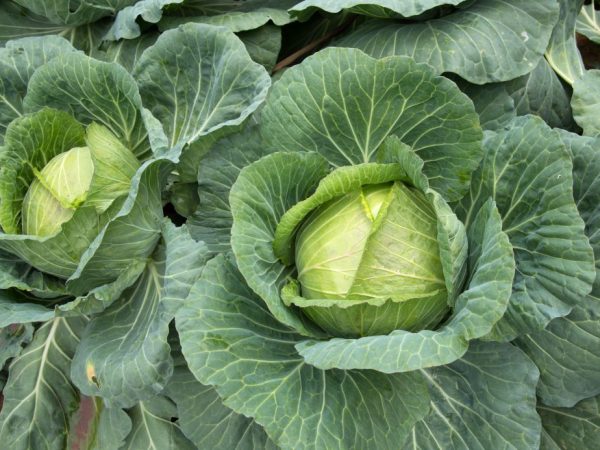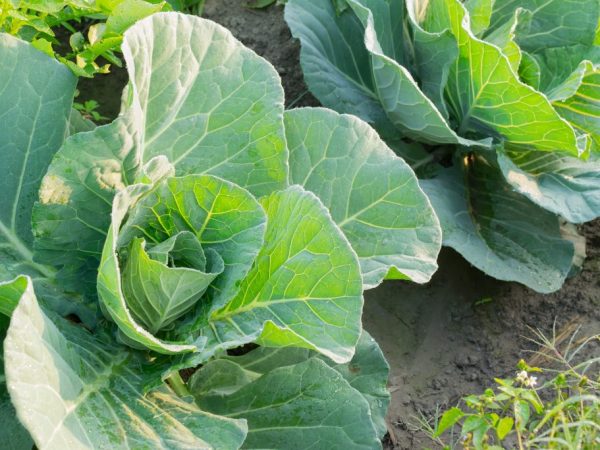Characteristics of the Krautkaiser cabbage
Excellent transportability, impressive head size, stable yield and ease of processing - these are the properties of Krautkayser f1 cabbage. This European vegetable hybrid is adapted for growing in temperate climates.

Characteristics of the Krautkaiser cabbage
Characteristics of the variety
The variety is early maturing. The characteristic of Krautkaiser cabbage indicates its ability to quickly adapt to all types of soil and weather conditions. The period of technical ripening of the variety is about 110-120 days from the date of the appearance of the first shoots (a difference is possible depending on the climatic conditions of the region). However, already 100 days after germination, the heads of cabbage gain a weight of 2.5 kg and are suitable for harvesting for long-term storage.
The variety has a well-developed leaf apparatus. The Krautkaiser f1 is able to suppress weeds, which significantly reduces weeding requirements.
The preferred planting density of the variety is 30-35 thousand per 1 ha. The hybrid is unpretentious, suitable for mechanical processing.
Description of the head
The heads of cabbage are rounded, fairly even in shape and size. Their average weight after reaching technical ripeness is about 3-4 kg.
The color is light green, with a characteristic slight sheen. The internal structure is developed: the forks are dense, evenly filled, without voids. It tastes sweet and juicy.
Application of the vegetable
The description of Krautkayser cabbage indicates that the hybrid is suitable for long-term storage (up to 7 months or more), resistant to decay. In this case, the collection of vegetables should be carried out in dry weather, sort the undamaged heads of cabbage and be sure to dry them for 1-2 days before placing them in a permanent storage place.
The vegetable is transportable, long-distance transportation is possible without loss of product quality.
This vegetable is eaten fresh, as well as in various hot dishes and pickles.
The vegetable contains a lot of vitamin C.
Care
To obtain a harvest in August, seeds of early cabbage without krautkaiser f1 are sown no later than the first half of April. The culture is quite demanding on heat, so it is worth giving preference not to open ground, but to greenhouses or home growing of seedlings.

Maintain your plants well
Seeds have high germination rates, germinate after 5-7 days. After the appearance of two true leaves, the seedlings should be dived with a deepening to the cotyledon leaves. The picking contributes to the growth of a more powerful root system, in addition, during the transplanting process, too weak plants are rejected.
The average period for growing seedlings is about 30 days, after which the plants are transplanted into open ground.
Illumination
Highlighting the seedlings is desirable in order to avoid pulling them out. The use of special phytolamps is optimal, but ordinary fluorescent lamps will also give the necessary effect of prolonging the day.
Temperature
Seeds will give amicable shoots if the soil is warmed up to 18-20 °.
However, after sprouting cabbage, the temperature is immediately reduced to 7-9 °. Such indicators are achieved by frequent airing or removing excess frames in greenhouses. When grown on windowsills, seedlings are isolated from heating batteries and too warm room air with a film.
The grown seedlings need to be hardened and adapted to the temperature regime of the open ground. It can be taken out to the balcony or the greenhouse can be completely opened every day for several hours.
Watering
The Krautkaiser f1 needs a lot of water throughout the growing season. Seeds germinate only in well-moistened and slightly compacted soil.
Seedlings are watered every 3-4 days with water at room temperature, after which ventilation is mandatory.
As the crop grows, the need for water increases. Large heads of cabbage are formed only at a constant soil moisture of about 80%.
Watering the white cabbage Krautkayser f1 is carried out in any convenient way:
- from watering cans;
- running water along furrows;
- using a rain installation.
During the ripening period of white cabbage, watering is sharply limited, otherwise the forks will crack.
Pests and diseases
This hybrid is resistant to internal punctate necrosis and fusarium.
The culture can be affected by such diseases:
- keela - drains the root system, forming growths. The disease is prevented by liming the soil;
- peronosporosis (or downy mildew) - dangerous for cruciferous plants. When affected, white spots appear on the underside of the leaves. As a preventive measure, ventilate the seedlings, avoid excessive moisture;
- viral infections - most often carried by pests, it is necessary to control aphids and ticks that carry diseases.
Common cabbage pests include aphids, cabbage flies and fleas. Their elimination should be carried out at the first symptoms of damage with the help of modern selective insecticides.
Conclusion
Krautkayser f1 is a hybrid of white cabbage with excellent consumer characteristics. The vegetable is tasty, nutritious and healthy both fresh and after a sufficiently long storage. To obtain a high yield, it is worth following simple recommendations for caring for plants. Abundant watering and feeding of cabbage is required.


